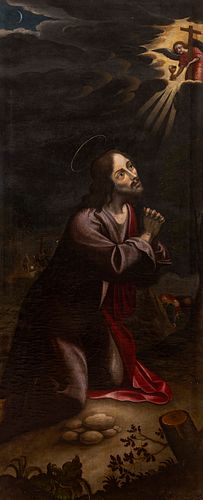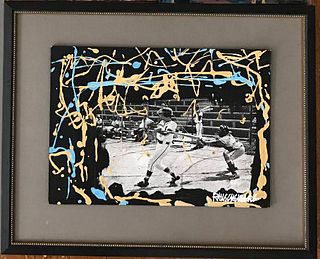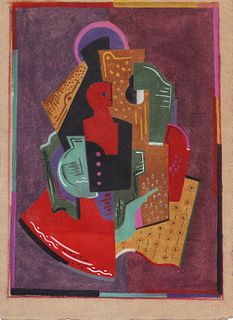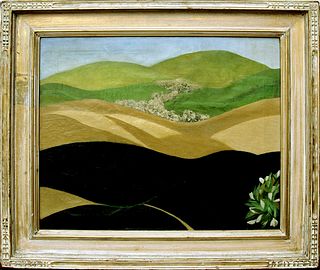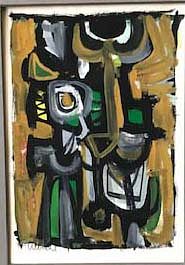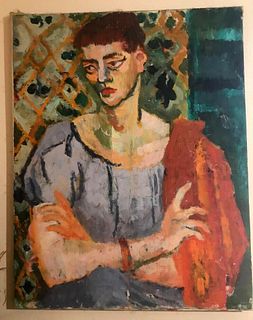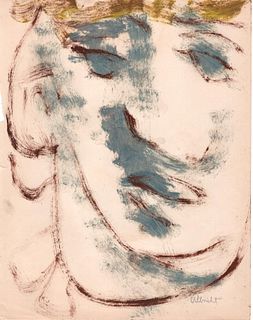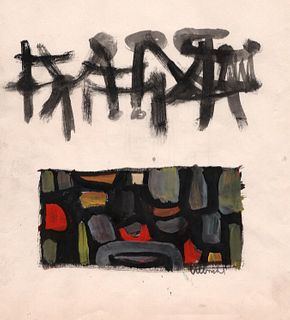Spanish school; early 17th century. "Prayer in the Garden". Oil on canvas. Relined.
Lot 56
About Seller
Setdart Auction House
Carrer Aragó 346
Barcelona
Spain
Setdart Subastas was born in 2004 and is currently the first online art auction in Spain with solidity, prestige and reliability guaranteed by our more than 60,000 users. Setdart has a young, dynamic and enterprising team ready to successfully manage the purchase and sale of art works through custom...Read more
Estimate:
EUR€3,000 - EUR€4,000
$3,225.81 - $4,301.08
Absentee vs Live bid
Two ways to bid:
- Leave a max absentee bid and the platform will bid on your behalf up to your maximum bid during the live auction.
- Bid live during the auction and your bids will be submitted real-time to the auctioneer.
Bid Increments
| Price | Bid Increment |
|---|---|
| EUR€0 | EUR€10 |
| EUR€200 | EUR€25 |
| EUR€500 | EUR€50 |
| EUR€1,000 | EUR€100 |
| EUR€3,000 | EUR€200 |
| EUR€5,000 | EUR€500 |
| EUR€10,000 | EUR€1,000 |
| EUR€20,000 | EUR€2,000 |
| EUR€50,000 | EUR€5,000 |
About Auction
By Setdart Auction House
Nov 3, 2021
Set Reminder
2021-11-03 08:00:00
2021-11-03 08:00:00
America/New_York
Bidsquare
Bidsquare : OLD MASTERS
https://www.bidsquare.com/auctions/setdart-auction-house/old-masters-7786
Setdart Auction House sofia@setdart.com
Setdart Auction House sofia@setdart.com
- Lot Description
Spanish school; early 17th century. "Prayer in the Garden". Oil on canvas. Relined. Measurements: 118 x 49 cm. Oil on canvas in which a devotional theme is represented. It is the representation of Jesus in the Garden of Olives at the moment in which the angel comforts him, while his disciples Peter, John and James sleep beside him (Matthew: ch. 26 v. 37; Mark: ch. 14 v. 33). The Gospels narrate that, distressed by a strange sadness, Jesus went to pray on the Mount of Olives, where the apostles followed him. Once there, Jesus withdraws to one side to pray, the moment of the crucifixion becoming present to him. Thus, this episode begins the bloody Passion in the soul of Christ. The apostles fall into a deep sleep, and an angel appears to Jesus to comfort him. In fact, this episode alludes to the greatest temptation of Jesus' life, the last of all: knowing his destiny, he can either flee from his enemies or continue to fulfill his divine mission, risking his life. (Luke: 22, 39-46). Which narrates how Jesus, on his knees, prayed, saying: "Father, if you are willing, take this cup away from me; but not my will, but yours be done". Then an angel from heaven appeared to him and comforted him. And in agony, he persisted in his prayer. His sweat became like thick drops of blood falling to the ground. And rising from prayer, he came to the disciples and found them asleep with sorrow; and he said to them, "How is it that you are asleep? Rise and pray that you may not fall into temptation". From its formal characteristics we can identify this work as being by a member of the workshop of Luis Tristán (Toledo?, 1580/85 - Toledo, 1624), one of the most outstanding representatives of the Toledo school of the early seventeenth century. A disciple of El Greco and Ribera in Italy, he returned to Toledo definitively in 1613. His style, thanks to the heterogeneous nature of his training, is very varied, almost contradictory at times. The strong influence of El Greco will always remain in his work, especially in the elongation and expressive instability of his figures, but his direct knowledge of Caravaggism in Rome, precisely during its peak, is reflected in a naturalism especially evident in some of his works. Tristan seems to lean towards one way or another at specific moments, either by his own decision or by imposition of the clientele. Likewise, the study of Venetian compositions can be appreciated in his language, although the clearest influence in his work is determined by the paintings that Juan Bautista Maíno left in Toledo, especially the "Portrait of the Four Easters" from the church of San Pedro Mártir, which combines Roman naturalism with sumptuous color. All this is reflected in works such as the set that Tristan made in 1616 for the parish church of Yepes. He is currently represented in the Prado Museum, the El Greco Museum in Toledo, the Louvre Museum in Paris, the Cambridge Museum, the Pollock House in Glasgow, the Fine Arts Museums of Budapest, Caracas, Bucharest and Seville, the Cathedral of Toledo and other temples in the region, the Santa Cruz Museum and the Archbishop's Palace in Toledo, the Royal Palace in Madrid and other collections and museums.
- Shipping Info
-
In-house shipping available. Please inquire at admin@setdart.com.
-
- Buyer's Premium



 EUR
EUR CAD
CAD AUD
AUD GBP
GBP MXN
MXN HKD
HKD CNY
CNY MYR
MYR SEK
SEK SGD
SGD CHF
CHF THB
THB